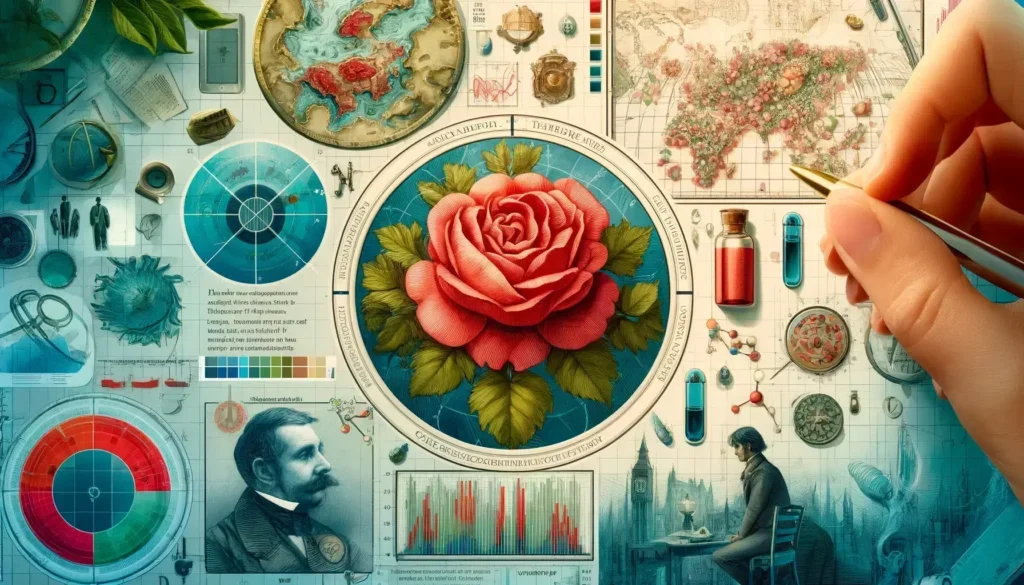The Next Step for Generative AI: Specific Use Case Data Visualization
Generative AI has come a long way in a relatively short time from its early applications, focusing primarily on non-use case-specific text generation and data interpretation. As AI permeates more industries, the demand for more sophisticated and visually-driven data representation is becoming essential. While valuable, managers and analysts realize that raw data or text-based outputs often miss the mark regarding clarity, engagement, and actionability—especially in complex, data-driven environments. For this reason, generative AI must evolve from text-based responses to embrace a more visual and user-friendly presentation of information tailored to specific use cases.
Why Visual Presentation Matters
The human brain processes visual information far faster than text. Research shows that 90% of the information transmitted to the brain is visual, and visuals are processed 60,000 times faster than text. This fact underpins why visual communication is a critical tool today, whether they are analyzing financial markets, reviewing medical diagnostics, or optimizing supply chains. Visual data presentation offers several key benefits:
- Improved Comprehension: Complex data sets allow for more intuitive understanding when represented visually. Charts, graphs, infographics, and heatmaps can convey patterns, trends, and outliers more effectively than tables full of numbers or lengthy textual descriptions.
- Enhanced Decision-Making: Executives and decision-makers must interpret data quickly to make informed choices. A well-designed visual can highlight key insights, allowing leaders to grasp the core message in seconds rather than slogging through dense reports.
- Better Engagement and Retention: Visuals are more engaging than plain text or numbers. They capture attention and increase the retention of the information being presented. Visual data could significantly improve how stakeholders absorb information and make decisions for industries that rely on client-facing reports or presentations.
Specific Use Cases Driving the Need for Visual-Generative AI
1. Healthcare and Medical Diagnostics
Medical diagnostics is a prime example of a field that needs more visual AI outputs. Doctors rely on complex diagnostic data, such as MRI scans, X-rays, and medical records, to assess patient conditions. Generative AI could evolve to create visually enhanced representations of medical data, helping doctors more easily identify areas of concern. For instance, generative AI could offer 3D visualizations of medical conditions or highlight abnormalities in scans, reducing diagnostic errors and speeding up treatment decisions.
2. Finance and Investment
Finance decision-makers are flooded with data on market trends, portfolio performance, and economic indicators. Traditional text-based or numerical analysis can easily become overwhelming, especially in fast-paced trading environments. AI-generated visual dashboards that aggregate and visually represent these metrics in real-time could provide traders and analysts with actionable insights in a more digestible format. Instead of reading dense reports, users would view dynamic visualizations, such as market heatmaps, portfolio risk assessments, or sentiment analyses, displayed graphically, making it easier to spot opportunities or risks.
3. Supply Chain and Logistics
Supply chain management is notoriously data-heavy, with companies needing to track shipments, inventory levels, and operational performance across multiple regions. While generative AI can already help analyze this data, the future lies in transforming those analyses into real-time, interactive visual maps and graphs. Imagine a logistics manager being able to see a global supply chain map with live updates, where AI predicts potential bottlenecks and suggests rerouting options—all represented in an easy-to-understand visual format.
4. Education and Learning
Generative AI also has the potential to revolutionize how students learn and engage with data. AI could generate interactive, visual learning materials instead of reading through dense textbooks or lengthy research papers. Students could explore virtual labs, manipulate data points in real-time simulations, or view complex mathematical formulas transformed into 3D visual models. Visual representations could also enhance accessibility, allowing students with different learning styles to engage with content in new ways.
5. Marketing and Consumer Insights
Visual analytics tools are essential in marketing, where data is abundant and consumer behavior constantly changes. AI-driven visuals can help marketers track the performance of campaigns, analyze consumer behavior, and identify emerging trends more efficiently than a traditional approach. Interactive visuals like real-time engagement heatmaps, sentiment flowcharts, or even AI-generated design mockups based on consumer preferences could empower marketers to pivot strategies quickly and accurately.
6. Law Enforcement & Defense
Quickly making sense of large amounts of data, often in near real-time life-and-death situations, is critical for law enforcement and defense. Law enforcement and defense evidence and other data are often spread across different systems and are unstructured, so visualization is crucial to ensure data is inspected and acted upon. AI visualization can reduce biases under stressful and time-sensitive situations, potentially making the difference between a solved case or successful mission and failure.
Challenges in Moving Toward Visual AI
Transitioning to a more visual-oriented generative AI model is not without its challenges. Current AI systems are often designed to handle text and numerical data rather than complex visual outputs. Developing visually rich, intuitive outputs requires more computing power, advanced machine learning models, and finely tuned algorithms that interpret context and aesthetics.
Moreover, data privacy concerns will only become more pressing as AI systems start generating visuals from sensitive information. For example, AI creating visual representations of personal health data or confidential financial reports could raise ethical and security questions. It’s crucial that AI-driven visuals maintain strict data privacy and security standards.
Lastly, user interface design is critical to the effectiveness of these visual outputs. No matter how advanced AI becomes at generating data visuals, the benefits will be lost if the end-user finds them difficult to navigate or understand. AI developers must work closely with UX designers to create intuitive, user-friendly platforms that allow end-users to interact with visualized data seamlessly.
The Road Ahead
The shift toward visual generative AI is inevitable as businesses and industries seek more intuitive and actionable ways to process vast amounts of data. Visual AI can transform how professionals make decisions, understand trends, and engage with data from healthcare to finance, supply chain management, and marketing. However, developing these systems will require innovation in AI algorithms, design, user experience, and ethical data use.
Generative AI has proven its value in automating tasks, generating insights, and synthesizing information. The next frontier is making these insights more visually accessible, engaging, and useful for those relying on them to drive real-world decisions. The future of AI isn’t just about what it can say or do—it’s about how it can show.





